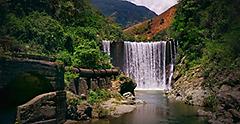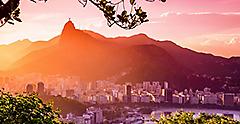There are hundreds of botanical gardens around the world, each perfectly unique. The best botanical gardens in the world have green havens for plant lovers to come together, learn about plants, improve their green thumb and just admire the astonishing variety of flora on display. There's nothing better than spending a relaxing afternoon strolling the grounds of a curated botanical garden, immersed in the fascinating plant world.
Explore Gorgeous Garden Collections

If Europe is on your itinerary, then you have some of the world's best botanical gardens to choose from, like Orto Botanico di Padova, the oldest university botanical garden in the world. Located in the northern Italian city of Padua, it's within easy reach of the port of Venice.
This botanical garden was founded quite some time ago in 1545 on the property of the Benedictine monks of St. Justina by the Venetian Republic. Today, it still has the same layout as in the 16th century. This atmospheric botanical garden hosts over 6,000 plants and about 3,500 species and covers around 22,000 square meters.
It's a pleasure to walk around the diverse plants from across Europe and the Americas, learning about the fascinating collection of medicinal and poisonous plants. Look out for the "Goethe Palm," a giant palm that dates back to 1585 and is named after 18th-century German author Goethe.
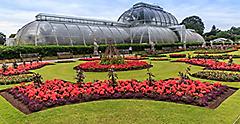
Kew Gardens (Royal Botanical Gardens) in London, England, boasts the world's largest and most diverse collection of plants. No less than 16,900 unique plant species thrive in this UNESCO World Heritage Site beside the River Thames. According to the Guinness World Records, the garden broke the record for largest plant collection.
Opened in 1759, the 130 hectares park provides a peaceful and refreshing retreat from the busy British capital. This botanical garden not only shows the plants that naturally grow in England, but the glasshouse also has zones for plants from tropical rainforests and dry climates. You can admire various cacti and carnivorous plants, for example. Another intriguing addition is the titan arum, officially the world's tallest and smelliest plant.
Stroll around the rock garden with the tiered waterfall and the arboretum with 14,000 trees. You can spend an entire day roaming the grounds, and I recommend checking out the Water Lily House, Temperate House, the Palm House, and the royal Kew Palace. End the day taking in the panoramic views from the Treetop Walkway.
Crossing the channel, you'll arrive in the Netherlands. Here, while not technically a botanical garden, the Keukenhof is the most visited flower park, and for good reason. It's a joy to walk around the 7 million bulbs in bloom between late March and mid-May: 800 varieties of tulips but also crocuses, hyacinths, lilies and daffodils.
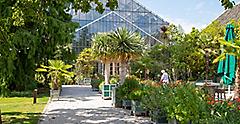
If you're looking to visit a real botanical garden instead, I recommend the outstanding Hortus Botanicus Leiden, the oldest botanic garden in the Netherlands. The oldest section, dating back to 1590, is the current Front Garden. The Systematic Garden shows the main groups in the plant kingdom, with information in Dutch and English and educational information geared toward children. In the Fern Garden, you'll see a large collection of hardy ferns from Europe, North America and Asia.
The tropical glasshouses display tropical plants brought over from Asia, Japan and South Africa during the Dutch East India Company period. There's also a giant waterlily, the Victoria amazonica from Brazil. Like the Keukenhof, this garden is located near Amsterdam, so if you're sailing here, it's easy to plan an afternoon at the garden. Besides the botanical garden, the city of Leiden is a great destination in itself: a smaller, less touristy version of Amsterdam, also with canals and centuries-old houses.
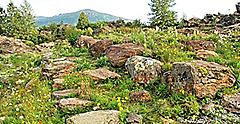
If you're also traveling to the northern part of Europe, don't miss the Arctic-Alpine Botanical Garden in Tromsø, Norway. Located in the Arctic Circle, this is the world's most northerly botanical garden, making it one of the most unique gardens in the world. As part of the University of Tromsø, it houses plants that not many other botanical gardens include. There are 25 collections in the landscaped rock garden, specializing in Arctic plants. There's also much to learn about species from other cold climates like Antarctica, the Himalayas and higher parts of South America and Africa.
The garden is open all year, and access is free, but the best time to visit is between May and October, when most flowers bloom. During mid-summer, from mid-May to late July, it doesn't get dark at all here. In June, you'll also get a chance to admire the breathtaking blooms at Rhododendron Valley. After your visit, climb the hill and soak in the jaw-dropping views over the fjord.
Discover Botanicals Gardens With Diverse Climates
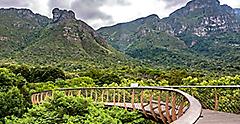
If you're lucky enough to visit Cape Town in South Africa, add a visit to the Kirstenbosch National Botanical Garden (Kirstenbosch Gardens) to your schedule. On the slopes of Table Mountain, this is one of the world's most biodiverse gardens, with more than 7,000 plant species. It's also a UNESCO World Heritage Site and, not surprisingly, one of the most famous botanical gardens in the world.
The treetop walkway, called the boomslang (tree snake), gives you extraordinary views across the forest and the turquoise waters of False Bay. Not only will you see many colorful flowerbeds, but you'll also have plenty of chances to spot brightly colored sugarbirds and sunbirds in the trees. Don't forget to visit the lovely sculpture garden that includes a bust of Nelson Mandela and a collection of stunning African Mambo sculptures.
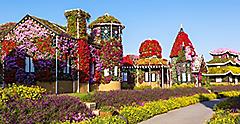
Is the Middle East also part of your journey? A lush garden full of flowers is perhaps not the first thing that comes to mind. However, in Dubai, one of the United Arab Emirates, you can visit the world's largest flower garden. Yes, it's quite a surprise to find all these bright-colored flowers blooming in this desert climate. Hence, the aptly chosen name Dubai Miracle Garden. There are 60 different flowers to marvel at here, including geraniums, marigolds, and petunias. The garden spreads over 72,000 square meters and is a welcome change from the malls, skyscrapers and beaches.
Further east, also in Asia, you may be so lucky to dock at Singapore port. Another must-visit garden can be found here: the captivating Singapore Botanical Gardens. This large tropical garden in the city center is free to access and a great destination to spend a few pleasant hours. Walking along the pathways, you can admire the orchard, the lakes, tons of fruit trees, the bonsai garden, the ginger garden, and the various exotic animals including troops of wild monkeys.
Don't miss the huge, postcard-worthy National Orchid Garden with more than 1,000 of this delicate flower species on display, organized into color zones. There's also a children's garden with a farm and some restaurants and bars. The gardens are a UNESCO World Heritage Site and are certainly one of the best botanical gardens to visit.
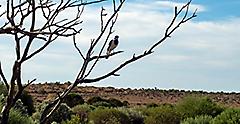
If you're journeying down to Australia, then check if you'll be near Port Augusta in the south of Australia. Here on the coast, a three-hour drive north of Adelaide, you'll find the extraordinary 250-hectare Arid Lands Botanical Garden, which is exactly what it sounds like: an arid climate garden. It's free to explore the garden that highlights plants that thrive in hot, dry climates, such as the Emu Bush, Native Fuchsia and other Australian plants.
There's also a very interesting rare plant collection with small and threatened populations. Pay attention to the many colorful birds (150 species have been counted) and the various lizards, and enjoy the breathtaking views of the Flinders Range. In the café, you can sample some of the fresh local food and wine.
Learn About Close Bonds With The Plant World

Unsurprisingly, Canada is home to some of the world's best botanical gardens. In fact, you'll find one of the most famous botanical gardens in the entire North American continent right in Montreal, Canada. The Montreal Botanical Garden (Jardin Botanique de Montréal) brings together more than 21,000 plant species. This 75-hectare garden, located in the city's heart, has been a popular destination since its foundation in 1931. Part of the spacious Maisonneuve Park, the garden itself consists of 10 greenhouses and 30 thematic gardens.
The Jardin Botanique de Montréal opened the First Nations Garden in 2001. This garden tells the story of the close bonds of Canada's indigenous population — the First Nations and the Inuit — with the plant world. You can also stroll around the Alpine Garden with its tiny plants and inspect the toxic and medicinal plants. Also, admire the rose garden, the Japanese Garden, and the Chinese Garden with a collection of bonsai trees.

Wander The Botanical Gardens Of A Tropical Paradise
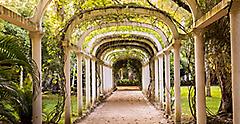
Traveling down to South America, you'll find this hub for nature lovers: The Rio de Janeiro Botanical Garden (Jardim Botânico) in Brazil. Located in the tropical forest of Tijuca National Park, this is considered one of the most beautiful botanical gardens around and it's a part of the UNESCO World Heritage list. The park was founded in 1808 by John VI, prince regent of the United Kingdom of Brazil and Portugal, to gather spices like nutmeg, pepper and cinnamon from the West Indies for export to Europe.
You can spend a wonderful time here hiking the wooded pathway surrounded by tall trees up to the Corcovado Mountain and the Christ the Redeemer statue. Bring your binoculars, immerse yourself in the rainforest, and keep an eye out for the monkeys and no fewer than 140 species of exotic birds, like the rare white-necked hawk. Around 40% of the plants here are cultivated; the rest is natural vegetation and forest. The Avenue of Royal Palms is famous, and not to be missed either are the hungry carnivorous plants, the rare bromeliads and orchids.
It doesn't matter to which continent you set sail; there are beautiful and famous botanical gardens and other gorgeous gardens and parks in all corners of the world. So why not include one or two of the best botanical gardens in the schedule of your next cruise?
Get Royal Deals, Sign Up Today

Getting There
Explore Our Most Affordable Itineraries
Explore gorgeous botanical gardens on the Ultimate World Cruise, the most epic world cruise ever to set sail.



